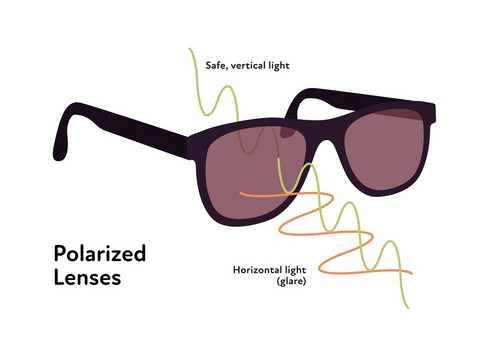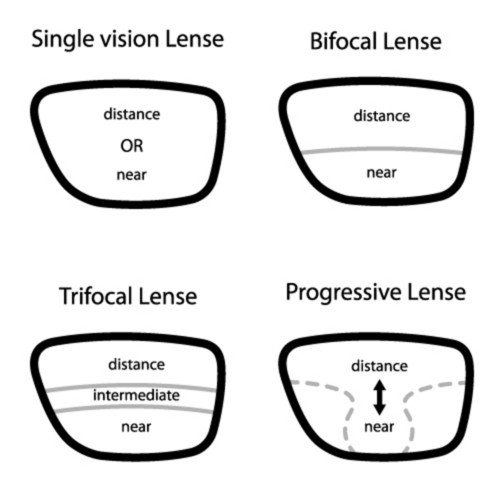That '90s tampil
That '90s tampil Wiki |
Edit this wiki | write new wiki article |
Single Vision Lenses
Single Vision Lenses
What are Single Vision Lenses?
Single vision lenses are used in the majority of prescription and reading glasses.
For nearsightedness, farsightedness, or astigmatism, single vision lenses only accept one prescription.
Depending on the sort of prescription they have, some people can use their single vision glasses for both near and far.
The centre of single vision lenses for persons who are farsighted is thicker. Nearsighted wearers' single vision lenses have larger edges.
Single vision lenses typically have a thickness of 3 to 4 mm. The thickness varies according to the frame size and lens material used.
It's crucial to take care of your eyes. What you should understand about how single vision lenses can benefit you is as follows:

What Refractive Errors Can Single Vision Lenses Correct?
If your optometrist diagnoses you with a refractive error, it implies that the way your eyes are shaped causes them to bend light improperly. Vision blur is the end effect. There are several kinds of refractive defects, and they all have an impact on your vision differently.
Each can cause the following symptoms:
Blurry near or distance vision
Double vision
Seeing glare or halos around bright lights
Headaches
Eye fatigue
Fortunately, you can use eyeglasses or contact lenses to address almost all visual needs.
The most typical refractive faults are correctable with single vision glasses:
Myopia
Myopia is a term for nearsightedness. It can be challenging to clearly notice distant objects. Single vision distance glasses may be beneficial.
Hyperopia
Hyperopia refers to farsightedness. Objects that are close up can be difficult to see clearly. Single vision reading lenses can help.
Presbyopia
The aging-related decrease of near vision is known as presbyopia. It may be challenging to perceive details of up-close objects. Single vision reading glasses may be useful.
Astigmatism
Due to the cornea's asymmetrical curvature, astigmatism causes vision to be hazy at all distances. You can improve your eyesight by wearing single vision reading glasses or single vision distance glasses.
Types of Single Vision Lenses
For vision correction, there are several distinct single vision lens choices. Here are three things to know about prescription lenses:
Polycarbonate Single Vision
Single-vision polycarbonate lenses are distinguished by their resilience to impact and durability. They frequently have an anti-reflective or anti-scratch coating.
The regular plastic lens is substantially thicker and heavier than this sort of lens. They also provide the most UV protection by blocking the sun's damaging ultraviolet light.
Mid-Index Single Vision
Mid-index single vision lenses are somewhat stronger, lighter, and 15% thinner than normal plastic lenses. They frequently have an anti-scratch coating and an anti-reflective coating, just like polycarbonate single vision lenses.
More importantly, those with comparatively higher prescriptions should consider using these lenses. They aren't quite as thin as polycarbonate lenses, though.
Polarized Single Vision
Sunglasses with polarised single vision lenses shield your eyes from light that reflects off slick, highly shiny surfaces.
The lenses work by regulating some aspects of light and restricting particular wavelengths. They boast a vertical filter that prevents the passage of horizontal glare.
Single Vision vs. Bifocal Lenses vs. Progressive Lenses
Eyewear can have single vision, bifocal, or progressive lenses.
People with several refractive e rrors can have their vision corrected with bifocals and progressive lenses.
rrors can have their vision corrected with bifocals and progressive lenses.
For those who want assistance seeing both up-close images and objects at a distance, bifocals offer two focal lengths. Wearers can view items up close thanks to the lower half of the lens. They can see clearly beyond that distance thanks to the upper part of the lens.
Between the close and far correction zones, progressive lenses merely add a third field of vision.
For those with just one refractive defect, single vision lenses are available.
How Much Do Single Vision Lenses Cost?
Without vision insurance, consumers spend $400 on frames and lenses on average.
The price of your spectacles will also depend on a number of other things.
The cost of your glasses may vary greatly depending on your prescription, any lens coatings (anti-reflective, blue light filtering, etc.), the type of frame you choose, where you reside, and where you buy them.
In order to ascertain your vision prescription, an eye test is required. Your optician must provide you with your prescription without charging you extra fees in accordance with the Federal Trade Commission's (FTC's) Eyeglass Rule. You should use that prescription to browse around for a pair of single vision glasses that are within your price range.
Best Places to Buy Glasses
https://gkboptic.com/